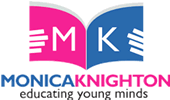My Story
 My youngest son’s reading comprehension struggles became apparent when he entered second grade.
My youngest son’s reading comprehension struggles became apparent when he entered second grade.
His fluency, which simply means the speed at which a reader reads words in print text, tested below second-grade expectations.
Fluency is critical because it builds a bridge between word recognition and comprehension. It allows readers time to focus on ‘what the text is saying’ instead of fixating on sounding out a word, whether silently (in the mind) or aloud.
Note: When calling words become effortlessly, readers can make important connections with what they are reading, how the text is developing, and importantly, what the author really wants them to know; so that, they are able to concentrate on comprehension and critical thinking.
At the time, I was a first-year teacher, and naturally, I felt that I let my own son down. You see, even though I was a novice educator, I was doing an effective job helping middle schoolers’ comprehension soar, but could not unlock the barrier within my own child.
Thankfully, the answer came—from above. The Lord instructed me to be part of the solution: While my son’s classroom teacher reinforced fluency instruction, my assignment was to foster his oral critical thinking. So that, when fluency improved, accurate comprehension would already be in place, activated. Brilliant thinking from a brilliant God.
I did just that. I would play audio versions of varied short stories. I would stop the recording at strategic points in the text to ask easy, medium, and difficult developmental questions that aligned to the text. If he answered correctly, I’d ask him to discuss the evidence in the text that he used to support his thinking. If he answered incorrectly, I would point out the portion of his answer that was correct and that which was faulty. I provided clear explanation using evidence from the text to affirm and reshape his thinking processes. Then I’d ask him to refine his answer. Afterwards, I would orally read with him the printed version to reinforce how print awareness is related to oral language. The learning blew me away.
In reflection, I realized that the method at which I used to foster critical thinking for my middle schoolers was what I did for my son. As why, it’s never too early to foster critical thinking in children. You can start as soon as you introduce them to their first picture book.
To date, more and more parents and teachers—even teachers of early learners—are fostering critical thinking the Monica Knighton Way!
“I had the privilege of watching Mrs. Knighton facilitate the workshop, Mommy, Literacy, and Me™. Her soft-spoken manner coached parents and students to listen attentively as she gave instructions. It was exciting to witness children engaging in the process and reading with their parents. Parents felt empowered to support their children’s reading and comprehension. I would highly recommend this workshop.”
– Katrina Hall, Parent Involvement Liaison, Martin Luther King Jr. FAME Academy, Jacksonville, FL

